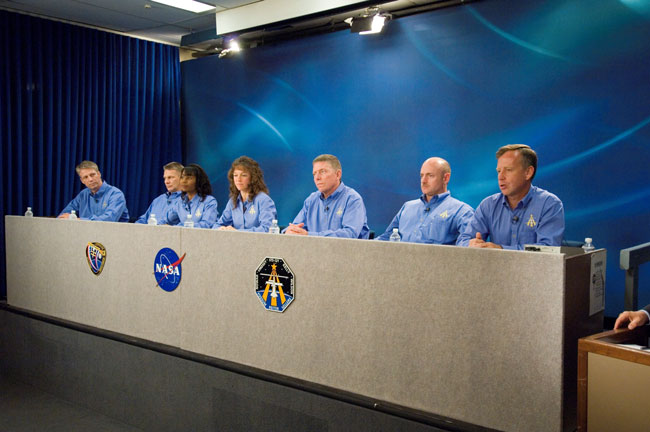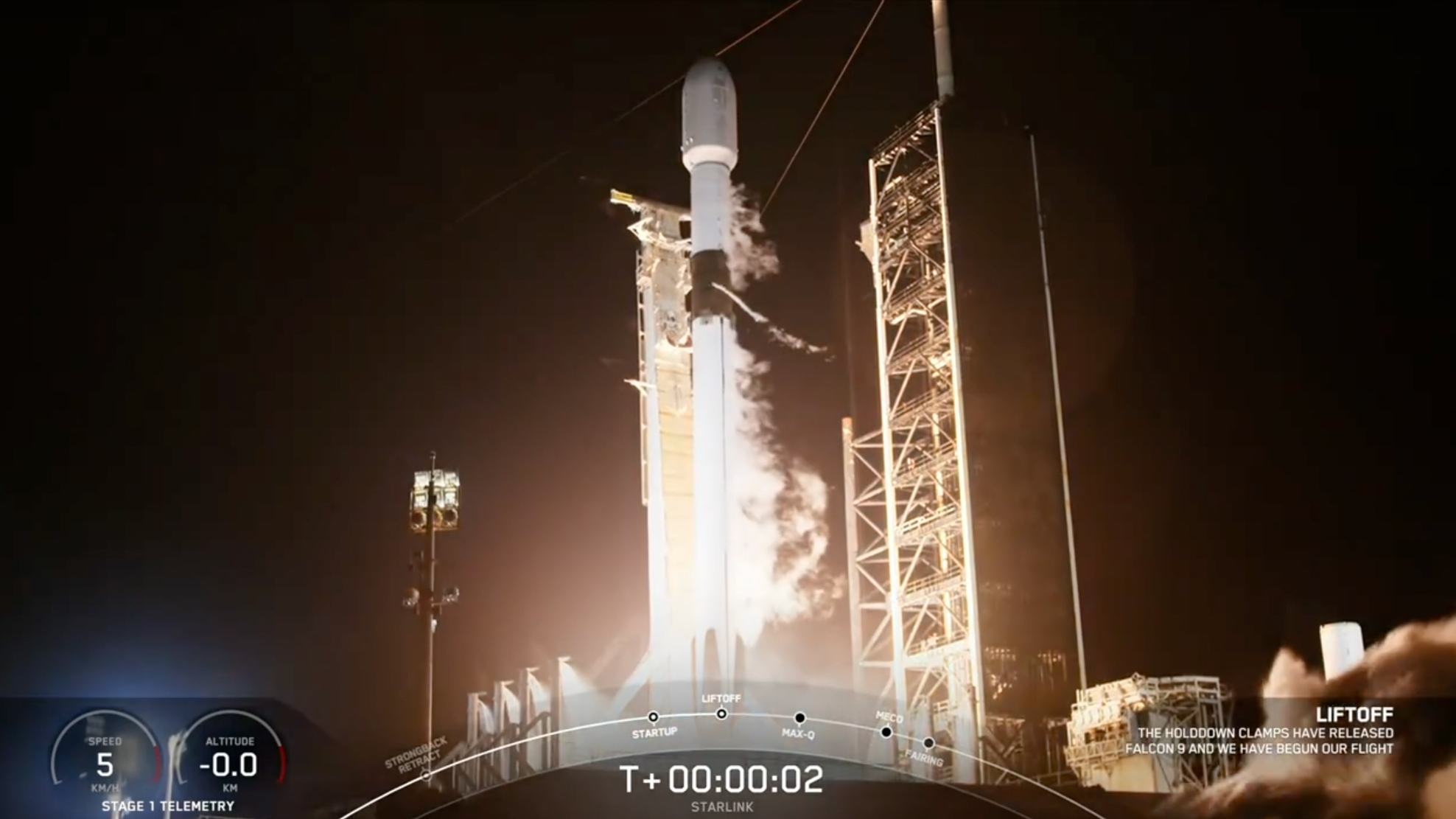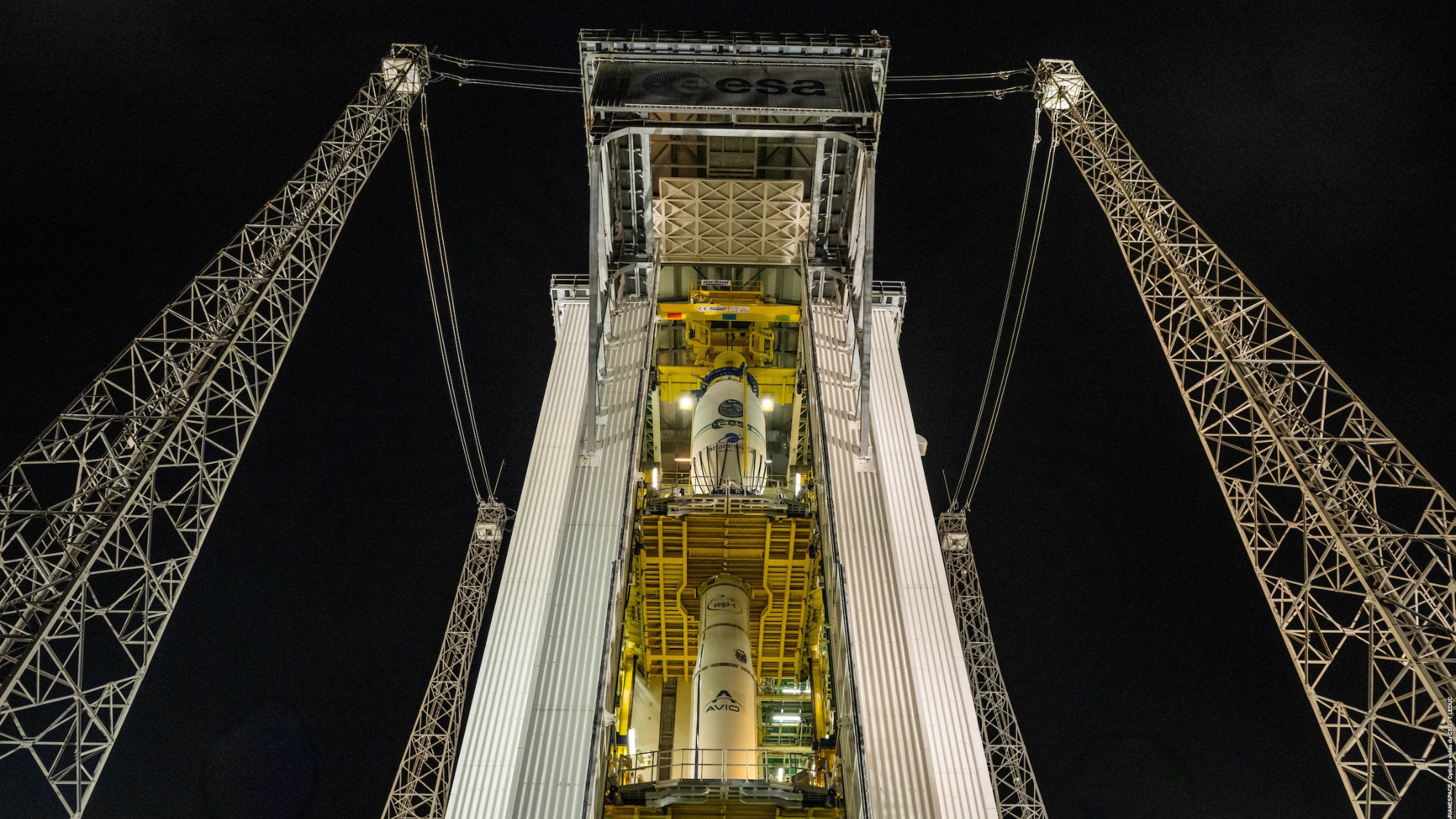Discovery Shuttle Astronauts Ready for STS-121 Mission

HOUSTON - Less than one month remains before NASA's planned launch of the space shuttle Discovery and seven astronauts are gearing up for their orbital ride.
"We're just a few weeks from flight," said NASA astronaut Steven Lindsey, commander of Discovery's upcoming STS-121 mission, at a press briefing held Thursday, June 8. "Its been a long road for us, a couple of years of training for a lot of us... so its great to be back here getting ready to fly."
Lindsey and his astronaut crew are scheduled to launch toward the International Space Station (ISS) on July 1 on NASA's second shuttle mission since the 2003 Columbia accident. The planned 13-day mission is expected to complete NASA's two-mission Return to Flight process and allow construction to resume on the ISS.
"Indications are that the vehicle is in good shape and we've past a lot of milestones," said Lindsey. "We still have several milestones to go, but things are looking good for July and I'm actually very optimistic about making the July launch window."
Lindsey, shuttle pilot Mark Kelly and mission specialists Piers Sellers, Lisa Nowak, Michael Fossum and Stephanie Wilson make up Discovery's STS-121 crew.
European Space Agency (ESA) astronaut Thomas Reiter, Europe's first ISS-bound long-duration astronaut, will ride with the STS-121 crew aboard Discovery to join the station's Expedition 13 astronauts and return the orbital laboratory to its full three-person complement. ISS crews have been limited to two astronauts since the Columbia accident.
"It was initially not very clear how I will actually get up to the space station," told Reiter to reporters. "So eventually I was very glad and happy to join Steve's crew. I fully feel included in this crew, integrated, and I really look forward to flying with [these] guys."
Get the Space.com Newsletter
Breaking space news, the latest updates on rocket launches, skywatching events and more!
Return to flight redux
NASA's STS-121 mission is a continuation of the agency's post-Columbia return to flight work--which first flew during last July's STS-114 space shot--aimed at increasing shuttle flight safety and developing repair techniques for use in orbit.
"The last flight did a little bit of repair work, we're doing a whole bunch more," told Lindsey to SPACE.com. "I hope we can accomplish that and develop, to the maximum degree possible, a repair capability."
Among the mission's primary objectives are evaluations of Discovery's redesigned external tank, which has been modified to reduce even more foam insulation from popping free during launch and posing a debris risk to the orbiter.
"From a flight test standpoint, my objectives would be that we have a successful flight with the tank, we learn more about the tank, [and] identify if we do have problems with the tank what to do about those," said Lindsey.
The loss of the Columbia orbiter, and its seven-astronaut crew, during reentry was caused by a heat shield breach sustained at launch by a chunk of foam shed at launch. Despite more than two years of work, a similar event occurred during the STS-114 launch--though the large foam piece did not strike Discovery--prompting yet more modifications.
"After Columbia, an enormous amount of effort was dedicated to beating down all the areas of known threat--two and half years of effort--and after 114, more effort," said mission specialist Piers Sellers. "We've driven those risks down as far as we can, which leaves the things you don't know about, which are hopefully very few."
"There's no getting away form the fact that at the end of the day, there is some residual risk that you either characterize and you think you understand, and then also some that you don't know about. You just have to deal with that," said Sellers.
While in orbit, the STS-121 astronauts will conduct a series of heat shield inspections with Discovery's sensor-laden orbiter boom--a 50-foot (15-meter) extension to the orbiter's robotic arm. In addition, a spacewalk will place astronauts at the end of that long boom to determine its stability for use as a heat shield work platform.
A second spacewalk will be dedicated to ISS repair, calling for Sellers and Fossum to replace a sliced video-data cable and safe an automated cutting tool on the space station's Mobile Transporter used to move the space station's robotic along the length of a main truss. A third spacewalk to test shuttle heat shield repair techniques could be added if shuttle power resources permit.
Boosting ISS crew
Reiter's space station arrival will be a watershed moment for the orbital laboratory, where maintenance and repairs have dominated over science for the attention of two-astronaut crews.
"With three persons on orbit we can definitely increase the scientific output," said Reiter. "Everybody understands that we are still in an assembly phase so the station cannot be considered to be in a normal operating state as it will be when assembly has finished. But we will definitely be able, with three persons on-board to increase the scientific output."
"One of my main duties during my stay is to perform a quite comprehensive scientific program for the European Space Agency--19 experiments in total from all different areas: life science, physics, biology. I will also be involved in a couple of the NASA experiments," said Reiter.
ISS crews have been limited to two astronauts since Expedition 6 due to the lack of NASA shuttle flights following the Columbia accident and delays in returning the orbiter fleet to flight.
Russian Soyuz spacecraft have since launched replacement crews to the ISS, with unmanned Progress freighters resupplying the space station between manned flights. NASA's STS-114 mission also carried tons of cargo to the ISS last year.
A German astronaut making his second spaceflight, Reiter's ISS mission will also mark a new beginning for Europe's manned spaceflight efforts.
Last week, ESA officials ferried the space agency's Columbus module--Europe's major contribution to the ISS project--to NASA's Kennedy Space Center in Florida to be prepared for a future shuttle launch.
"Its quite important from the view of the European Space Agency to have this opportunity to prepare when Columbus comes up," said Reiter, speaking of his own flight. "I think it is a great opportunity for ESA to warm up... and in this way get prepared as soon as our module has been docked [so] they can right away begin with the nominal operation of the Columbus module."
Join our Space Forums to keep talking space on the latest missions, night sky and more! And if you have a news tip, correction or comment, let us know at: community@space.com.

Robert Pearlman is a space historian, journalist and the founder and editor of collectSPACE.com, a daily news publication and community devoted to space history with a particular focus on how and where space exploration intersects with pop culture. Pearlman is also a contributing writer for Space.com and co-author of "Space Stations: The Art, Science, and Reality of Working in Space” published by Smithsonian Books in 2018.In 2009, he was inducted into the U.S. Space Camp Hall of Fame in Huntsville, Alabama. In 2021, he was honored by the American Astronautical Society with the Ordway Award for Sustained Excellence in Spaceflight History. In 2023, the National Space Club Florida Committee recognized Pearlman with the Kolcum News and Communications Award for excellence in telling the space story along the Space Coast and throughout the world.









